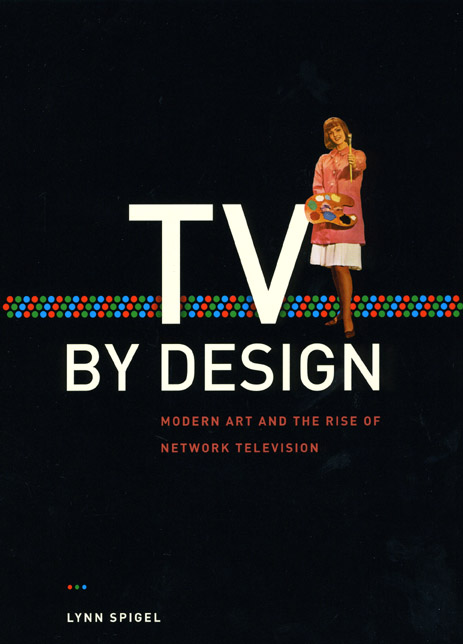TV as fine art

In a speech before the National Association of Broadcasters in 1961, the then-chairman of the FCC Newton N. Minow famously dubbed TV a “vast wasteland.” And as Andy Battaglia notes in his article for the February/March issue of Bookforum, “ambassadors of high culture voiced similar worries almost from the moment the first televised image was broadcast to a putatively unwitting and undereducated public.” But in her new book TV by Design: Modern Art and the Rise of Network Television, author Lynn Spigel offers an alternative account of the medium’s history that “upends talk of early television as an empty enterprise,” by demonstrating a surprising partnership between television and the world of modern art that transformed the way Americans experienced the world visually. Battaglia writes:
Focusing on broadcasting’s formative era, the ’40s through the ’70s, Lynn Spigel… looks at the ways in which the new medium got in bed with various disciplines—in the fine arts as well as more utilitarian modes of graphic design—thought to be of higher mind.…
Valuable chapters survey developments in visionary set design and avant-garde programming (including “silent” broadcasts by comic Ernie Kovacs and provocatively awkward ones by Andy Warhol), but the book mainly focuses on the more general task laid out in its epilogue’s title, “Framing TV, Unframing Art.” “Although broadcast historians aren’t wrong,” Spigel writes, “the singular focus on programs blinds us to the variety of visual experiences that early TV actually offered.” Part of that variety involved simply watching shows in a decidedly modern zoned-out state, to be sure. But part of it helped prod the masses to contemplate what it meant to look, at art and at everything else. Just think of the recent scene in Mad Men in which a young ad exec stares up at a Rothko and says, “Maybe you’re just supposed to experience it.”
The January 13th edition of the Village Voice also ran a short review praising Spigel’s work for its revelatory account of television’s symbiotic relationship with fine art. And rumor has it that another review will be appearing in Bookforum‘s sister publication, Artforum soon.
Read an excerpt from chapter two of Spigel’s book: “An Eye for Design: Corporate Modernism at CBS.”